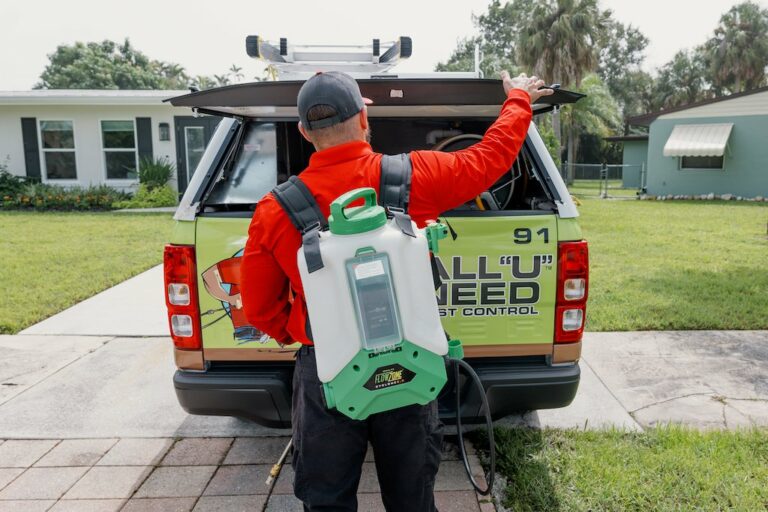How to Get Rid of Ants in Your Car
Published: November 17, 2023

Dealing with ants invading your car can be an unexpected and frustrating challenge. Whether you're heading to work, embarking on a road trip, or simply running errands, the last thing you want is to share your vehicle with an army of tiny intruders. Fortunately, there are effective and practical solutions to reclaim your car from these pesky pests. In this blog post, we'll explore various strategies and tips on how to get rid of ants in your car, ensuring a pest-free and comfortable driving experience. From identifying the source of the problem to implementing preventive measures, let's delve into the following items you can take to bid farewell to unwanted ant passengers in your vehicle.
1. Identify the Source of Ants in Your Car
The first step in successfully eliminating ants from your car is to identify the source of the invasion. Ants are attracted to possible food sources, spills, or any residue left behind in your vehicle. Begin by thoroughly inspecting the interior, paying close attention to areas where food is consumed, such as the seats, floor mats, and even the glove compartment. Check for food scraps, spilled liquids, or any forgotten snacks that might have attracted the ants. Additionally, examine the exterior of your car for potential entry points, such as cracks or gaps around windows and doors. Pinpointing the source of the ant infestation is crucial for developing a targeted and effective plan to eradicate them from your vehicle.
2. Vacuum Thoroughly
Once you've identified the source of the ant invasion in your car, the next crucial step is to thoroughly vacuum the interior. Use a handheld vacuum cleaner or the hose attachment of your regular vacuum to reach into every nook and cranny of your vehicle. Pay special attention to areas where crumbs and food particles may accumulate, such as between and under the seats, in the seat crevices, and along the floor mats. You will want to eliminate ant pheromone trail the ants left behind or any verified food source. Vacuum the trunk as well, as ants can easily find their way into this area. Be meticulous in your approach, ensuring that you leave no spot unchecked. This not only removes the existing ant-attracting debris but also disrupts the ants' scent trails, making it harder for them to navigate and re-establish their presence in your car. After a thorough vacuuming, dispose of the collected debris in a sealed trash bag, further minimizing the chances of ants making a comeback.
3. Use Ant Baits or Traps for Ants in Your Car
To complement your efforts in getting rid of ants in your car, consider employing ant baits, traps or even essential oil sprays. Ant baits are an effective way to lure ants away from your vehicle and eliminate them at the source. Place ant bait stations strategically in areas where you've observed ant activity or near entry points they may be using. The bait attracts ants, which then carry the poison back to their nest, ultimately eradicating the colony. Alternatively, ant traps can be strategically placed within the car itself. These traps typically contain a sticky substance or poison that captures or kills the ants upon contact. Choose ant baits or traps designed for indoor use, ensuring they are safe and effective in confined spaces. Remember to follow the manufacturer's instructions for placement and usage to maximize their efficiency. This dual approach of cleaning and using ant baits or traps enhances your chances of eliminating ants from your car and preventing a recurrence of the infestation.
4. Seal Entry Points
Prevent future ant infestations by sealing off any entry points into your car. This can include gaps around windows and doors, as well as any other openings that ants could use to gain access. Use weatherstripping or silicone caulk to seal these areas effectively.
5. Keep Your Car Clean
Maintaining a consistently clean environment in your car is essential to prevent ants infestations. After vacuuming and using ant baits or traps, establish a routine to keep your vehicle free of food crumbs and spills. Regularly remove any trash, food items, and other debris that could attract ants. Consider placing a small trash bag in your car and empty it frequently. Avoid eating in your car whenever possible, and if you must, do so cautiously, making sure not to leave behind any food remnants, this will eliminate food sources available. Wipe down surfaces regularly with a cleaning solution to eliminate any lingering odors or traces of food. Additionally, be vigilant about checking for and addressing any potential entry points, such as gaps around windows or doors. If you park your car overnight in an area with a lot of shrubbery and trees or bad parking spots, consider a vehicle cover. Might want to consider a new parking spot. By incorporating these habits into your car care routine, you create an inhospitable environment for ants, reducing the likelihood of future invasions and ensuring a clean and pest-free driving experience.
6. Consider Professional Pest Control
If you've tried the above methods and are still experiencing issues with ants in your car, it may be time to call in the professionals. A pest control expert will have the knowledge and experience to effectively eliminate the ant problem and provide long-term solutions.
Remember, getting rid of ants in your car requires patience and persistence. By following these tips and taking preventative measures, you can successfully rid your vehicle of ants and keep them from returning. Happy driving!
Disclaimer: The information provided in this blog post is for informational purposes only. It is not intended to be a substitute for professional advice or treatment. Always consult with a qualified pest control specialist for proper diagnosis and treatment options.
